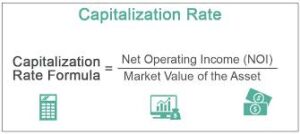
 ﺡ ﺡ ﺡ Capitalized Asset
ﺡ ﺡ ﺡ Capitalized Asset
Capitalized Asset, In accounting, assets that should be Capitalized Assets are those that meet specific criteria and are expected to provide economic benefits to the company beyond the current accounting period. Capitalizing an asset means recording it on the balance sheet as a long-term asset rather than immediately expensing it.
The specific assets that should be capitalized can vary depending on accounting standards and industry practices.
Here are some common examples:
1.Property, Plant, and Equipment (PPE):
Tangible assets such as buildings, land, machinery, vehicles, and furniture that are used in the production or operation of a business and have a useful life extending beyond one accounting period.
2.Intangible Assets:
Non-physical assets that lack a physical presence but hold value for the company. Examples include patents, copyrights, trademarks, licenses, software, customer lists, and goodwill.
3.Research and Development (R&D) Costs:
Costs incurred in the development of new products or processes may be capitalize under certain circumstances, such as when the project meets specific criteria for recognition as an intangible asset.
4.Construction-in-Progress (CIP):
Assets under construction or development that are not yet ready for their intended use. These assets are capitalize and transfer to the appropriate asset category upon completion.
5.Acquisition Costs:
Costs incurred to acquire assets, such as purchase price, legal fees, transportation costs, and installation charges, are typically capitalize as part of the asset’s cost.
It’s important to note that the decision to capitalize an asset is based on the concept of materiality and the specific guidelines outlined in accounting standards or regulations applicable to the company’s jurisdiction. Capitalization thresholds, useful life assessments, and capitalization policies may vary between different organizations or industries.
Capitalizing assets allows for their recognition as long-term assets on the balance sheet, and their costs are typically allocate over their useful life through depreciation, amortization, or impairment charges. Properly identifying and capitalizing assets helps ensure accurate financial reporting and provides a more accurate representation of the company’s financial position and performance.
FAQs:
What does it mean to capitalize an asset?
Capitalizing an asset means recording its cost as a long-term asset and spreading its expense over its useful life through depreciation or amortization.
Which assets should be capitalize?
Long-term assets like property, plant, equipment (PPE), intangible assets, and significant improvements should be capitalize.
Are small purchases capitalize?
No, small purchases or items with a short useful life are typically expensed immediately rather than capitalize.
Should leased property improvements be capitalize?
Yes, leasehold improvements are capitalized and amortized over the lease term or the useful life of the improvement.
Are intangible assets like patents capitalize?
Yes, intangible assets such as patents, trademarks, and software are capitalize and amortize over their useful life.
Can major repairs be capitalize?
Yes, major repairs or improvements that extend the life or enhance the value of an asset are capitalized.
Are land and buildings capitalize?
Yes, land and buildings are capitalize as they provide long-term value to a business.
Is interest during construction capitalize?
Yes, capitalize interest incur during the construction of a long-term asset is added to the asset’s cost.
Should inventory be capitalize?
Inventory itself isnﻗt capitalize, but if itﻗs part of a capital project (like raw materials for building construction), its cost can be capitalize.
Are software purchases capitalize?
Yes, software purchase for long-term use, especially if customize or developed in-house, should be capitalize.
Related Topics
To visit: https://www.mca.gov.in
Contact:ﺡ ﺡ ﺡ ﺡ 8130555124, 8130045124
Whatsapp:ﺡ ﺡ https://wa.me/918130555124
Mail ID:ﺡ ﺡ ﺡ ﺡ ﺡ ﺡ operations@vibrantfinserv.com
Web Link:ﺡ ﺡ ﺡ https://vibrantfinserv.com
FB Link:ﺡ ﺡ ﺡ ﺡ ﺡ ﺡ https://fb.me/vibrantfinserv
Insta Link:ﺡ ﺡ https://www.instagram.com/vibrantfinserv2/
Twitter:ﺡ ﺡ ﺡ ﺡ ﺡ ﺡ https://twitter.com/VibrantFinserv
Linkedin:ﺡ ﺡ ﺡ https://www.linkedin.com/in/vibrant-finserv-62566a259/
